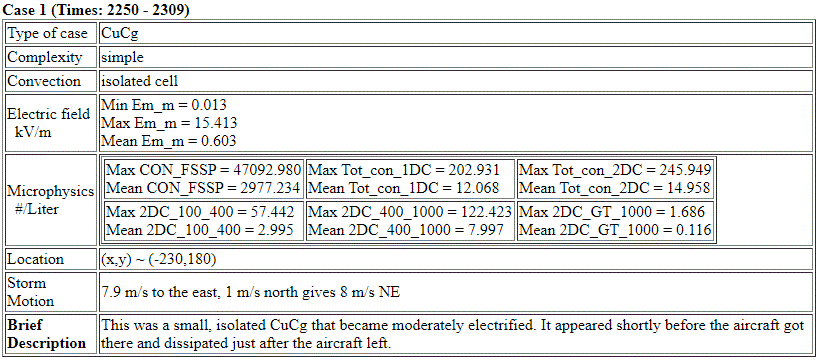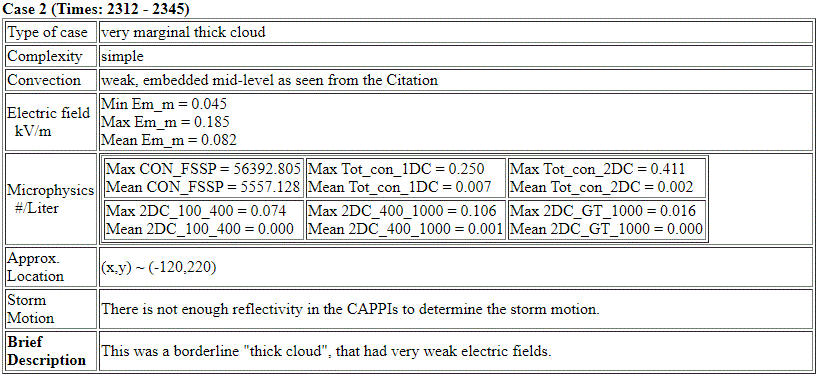Synthesis for February 10, 2001
The radar data for this day is the Jacksonville NEXRAD (KJAX).

Summary for February 10, 2001
Investigator: (Jim Dye)
CASE I
Flight notes indicate a first penetration into a CuCg at about 2253. This and a following penetration between 2256 and 2257 are shown in

Note in the MER plots for both passes that the FSSP, 1D and 2D probes show that particles were present and that some particles >1 mm were measured by the 2D probe. Thus, the particle probes were functioning properly, an important result for Case II below.
Summary:
This small CuCg was just large enough to produce moderate electric fields. This case also shows that the microphysical and electric field instruments were working properly.
CASE II
After leaving the small CuCg we flew to an area to the ENE with layer clouds with some weak embedded convection as seen by small turrets extending above the scattered layers.

So there was some continuity of the return, but from the radar perspective it seems more like a small cell rather than an extensive layer. And with this little return it's hard to know if it meets the 4500 feet criteria for a thick cloud.
The weak scattered returns persist during the investigation and afterwards and are consistent with the measurements from the FSSP and the flight notes that indicate the A/C was flying in and out of weak cloud.
Excerpts from flight notes:
"2321 -- Cleared to 23 kft, broke above clouds at ~21 kft."
"~2325 -- Photo to S of turret above our alt. at 23 kft."
"233520 -- start spiral at 18 kft, ...."
"in cld at 19.5, out at 21 k, back in at 22 k."
"At 23.2, clds to SW just a little above us maybe to 23.5"
Summary:
From the above flight notes and the scattered radar returns, it appears that this cloud was on the edge of what the criteria for a thick cloud requires. However, the radar returns are too scattered to be definitive.
In any case it is at the extreme lower end of what would be considered a thick cloud for LLCC purposes.
It is worth noting though that the electric fields were very weak. The strongest Emag observed was ~ 200 V/m.


